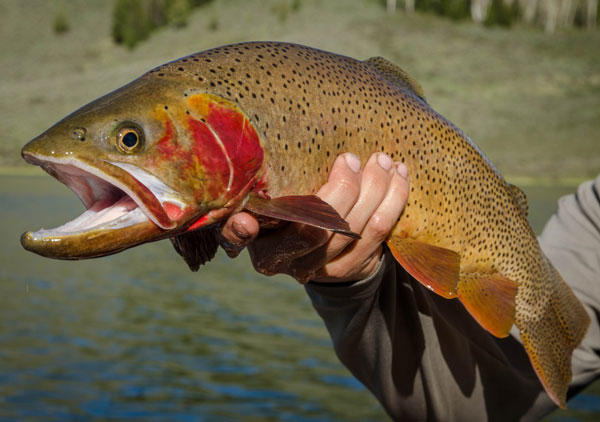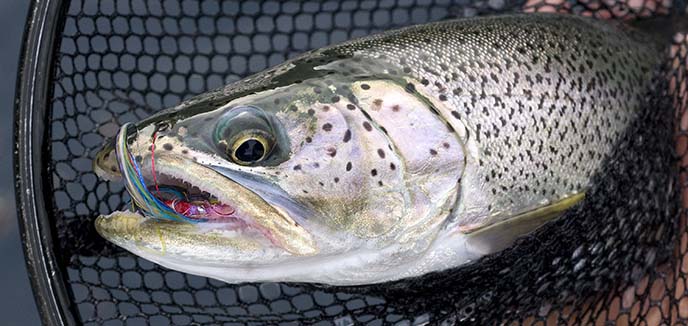

However, the “cutthroat” markings that this species is famous for is not unique. Colors range from gray to golden or green to black.

Their overall coloration and size can vary greatly depending on their habitat. The cutthroat gets its name from prominent red slashes on its lower jaw. These trout are often raised in hatcheries to help restore native populations and stock for angling. While not protected under the Endangered Species Act, habitat loss and non-native fish have threatened several subspecies. They can also reside in clear, deep lakes and sometimes inadvertently breed with rainbow trout. This species spawns in rivers with clear, well-oxygenated, shallow water and gravel buttons. Their specific name “clarkii” comes from the explorer William Clark of the Lewis and Clark Expedition. The cutthroat trout inhabits the Pacific Ocean’s cold-water tributaries and resides in the Rocky Mountains and Great Basin of North America. This family of freshwater fish includes salmon, chars, trout, graylings, and freshwater whitefishes. Oncorhynchus clarkii, commonly known as cutthroat trout, is part of the family Salmonidae.
Cutthroat trout how to#
Keep reading to learn more about this trout species and how to catch them. This striking fish is growing in popularity as a sport fish in the southeast, but the cutthroat is native to cold, clear streams in western North America.Īlthough some threatened subspecies suffer from habitat loss, many anglers enjoy fly fishing for this game fish. While this species may be elusive, anglers willing to put in the time to familiarize themselves with their movement patterns will find themselves in some of the most beautiful spots in the state, including the Frank Church–River of No Return Wilderness, the mighty Salmon River and the South Fork of the Boise River.The cutthroat trout is a species of freshwater fish related to rainbow trout.

Depending on a fish’s particular life history, bull trout can be found in small streams, large rivers, lakes and reservoirs. Where & When to Fish Bull Troutīull trout can be a challenge to pursue due to their life history diversity and being highly migratory. The lake trout can also be easily distinguished from bull trout by its deeply forked tail. That’s the best way to tell these two species apart. The bull trout lacks black spots on the dorsal fin that the brook trout has. Bull trout, lake trout and brook trout are all chars: members of the trout family with light spots on a dark background. In Idaho, bull trout are often misidentified as brook trout, which are a non-native species in Idaho. Some populations within the Bear River drainage near the intersection of Idaho, Wyoming and Utah continue to exhibit the species’ impressive life history and habitat requirement diversity, migrating seasonally between lower-elevation river systems and the cold, clear waters of high-elevation tributaries. A number of small streams, many of which are enveloped by the Cache National Forest, await anglers looking to catch this oft-forgotten native trout species in Idaho.

Once thought to be extinct, after an aggressive, coordinated recovery effort by multiagency conservation teams and private citizens, there are now at least 202 Bonneville cutthroat trout populations that occupy about 2,728 miles of stream habitat in 21 watersheds in Utah, Idaho, Nevada and Wyoming. While Bonnevilles inhabit the smallest geographic range of any of the native trout of Idaho, their recovery in far southeast Idaho is an incredible example of collaboration and compromise. Bonneville cutthroat trout (Oncorhynchus clarkii utah)


 0 kommentar(er)
0 kommentar(er)
